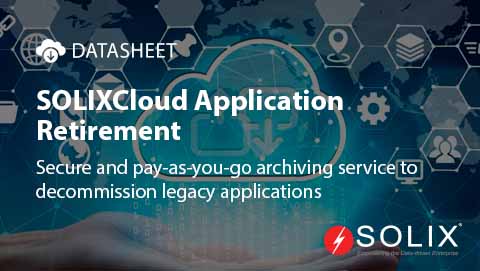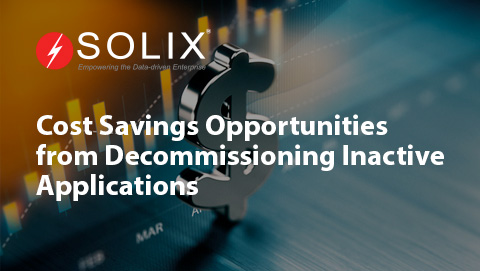
Application Retirement Architecture
Hello and welcome! Today, were diving into a critical aspect of IT that often gets overlookedapplication retirement architecture. So, what is it At its core, application retirement architecture is the strategic approach an organization takes when decommissioning outdated applications. It involves careful planning and execution to ensure data retention, compliance, and a seamless transition to modern systems. And why should you care Because effectively managing the retirement of applications can save your organization money, reduce liability, and free up valuable resources for innovation.
Lets break this down in a straightforward manner. Throughout my years in tech, Ive seen companies struggle with the complex process of phasing out old applications. After all, its not just about shutting down a system; its about preserving vital data and transitioning smoothly to a more robust infrastructure. This process, when done right, can significantly enhance operational efficiency and improve overall business performance.
The Importance of Application Retirement Architecture
When considering application retirement architecture, one key motivation stands out risk management. Companies accumulate applications over time, but not all of them serve a purpose anymore. Legacy systems can pose security risks along with compatibility issues with modern technologies. This is where a thoughtful retirement strategy begins to pay off.
From my own experience, Ive seen organizations trapped in a cycle of dependency on legacy applications that they feared retiring due to concerns about data loss or operational disruptions. Unfortunately, this mindset can lead to more significant issues down the line, including increased maintenance costs and exposure to security vulnerabilities. This is why developing a comprehensive application retirement architecture is so essential.
Steps to Building an Effective Application Retirement Architecture
Alright, lets talk about steps. A successful application retirement strategy involves several key actions
1. Assess and Inventory Start by understanding which applications are eat up valuable resources. Conduct an inventory to evaluate each applications performance and relevance. Are you still using that old accounting software Or is there another solution that better fits your needs
2. Define Objectives What do you want to achieve with this retirement Whether its cost savings, regulatory compliance, or better data management, having clear goals provides direction for the retirement process.
3. Data Migration Planning Its crucial to determine what data needs to be retained and where it will go. This can be a daunting task; however, careful planning can simplify this step. Cloud technologies can facilitate smoother data transitions.
4. Implement and Test Before outright retirement, implement the changes in a controlled environment. Testing before final execution ensures you address any unforeseen issues without affecting ongoing processes.
5. Execute and Optimize Once everything has been thoroughly tested, put your plan into action. Monitor the output closely, identifying areas for continuous improvement.
Real-World Application Retirement Scenarios
Let me share a practical scenario. A mid-sized retail company I consulted for realized that a significant portion of its operational costs stemmed from maintaining an outdated inventory management system. It was slow, buggy, and forced employees to spend hours troubleshooting instead of focusing on sales.
We initiated a project to design an application retirement architecture specifically for this system. After careful assessment, we determined that a cloud-based solution would best meet their needs. We set clear objectives, outlined a migration plan, and emphasized thorough testing which ultimately allowed a seamless transition.
Fast forward six months, and that same retail company reported a 30% reduction in overhead costs and increased inventory accuracyall thanks to a well-planned application retirement strategy. This success story highlights the transformative power of proper application retirement architecture.
How Solix Supports Application Retirement Architecture
As you explore your options in application retirement architecture, youll be pleased to know that organizations like Solix are dedicated to facilitating this journey. They offer comprehensive solutions tailored to help manage the complexities of legacy data and applications. One excellent solution worth considering is the Data Archiving product; this can assist in securely storing and managing data during and after application retirement, ensuring compliance and reducing risk.
Additionally, Solix insights into data modernization pave the path for organizations looking to transition smoothly. For any questions or deeper insights, I highly encourage you to reach out to Solix. You can contact them by calling 1.888.GO.SOLIX (1-888-467-6549) or using their contact pageThey have experts ready to assist you through every step of your transition.
Final Thoughts
In wrap-Up, application retirement architecture is an ongoing necessity in the tech landscape that shouldnt be ignored. With careful planning and execution, your organization can reap the benefits of enhanced efficiency and security. Whether youre contemplating the retirement of a single application or an entire suite, the principles remain the same. Data matters, planning is crucial, and getting expert help can make all the difference.
About the Author
Im Kieran, a tech enthusiast and software architect with years of experience in guiding organizations through the complex landscape of application retirement architecture. I thrive on helping businesses innovate while managing their legacy systems efficiently.
Disclaimer The views expressed in this blog post are my own and do not reflect the official position of Solix.
Sign up now on the right for a chance to WIN $100 today! Our giveaway ends soon‚ dont miss out! Limited time offer! Enter on right to claim your $100 reward before its too late!
DISCLAIMER: THE CONTENT, VIEWS, AND OPINIONS EXPRESSED IN THIS BLOG ARE SOLELY THOSE OF THE AUTHOR(S) AND DO NOT REFLECT THE OFFICIAL POLICY OR POSITION OF SOLIX TECHNOLOGIES, INC., ITS AFFILIATES, OR PARTNERS. THIS BLOG IS OPERATED INDEPENDENTLY AND IS NOT REVIEWED OR ENDORSED BY SOLIX TECHNOLOGIES, INC. IN AN OFFICIAL CAPACITY. ALL THIRD-PARTY TRADEMARKS, LOGOS, AND COPYRIGHTED MATERIALS REFERENCED HEREIN ARE THE PROPERTY OF THEIR RESPECTIVE OWNERS. ANY USE IS STRICTLY FOR IDENTIFICATION, COMMENTARY, OR EDUCATIONAL PURPOSES UNDER THE DOCTRINE OF FAIR USE (U.S. COPYRIGHT ACT § 107 AND INTERNATIONAL EQUIVALENTS). NO SPONSORSHIP, ENDORSEMENT, OR AFFILIATION WITH SOLIX TECHNOLOGIES, INC. IS IMPLIED. CONTENT IS PROVIDED "AS-IS" WITHOUT WARRANTIES OF ACCURACY, COMPLETENESS, OR FITNESS FOR ANY PURPOSE. SOLIX TECHNOLOGIES, INC. DISCLAIMS ALL LIABILITY FOR ACTIONS TAKEN BASED ON THIS MATERIAL. READERS ASSUME FULL RESPONSIBILITY FOR THEIR USE OF THIS INFORMATION. SOLIX RESPECTS INTELLECTUAL PROPERTY RIGHTS. TO SUBMIT A DMCA TAKEDOWN REQUEST, EMAIL INFO@SOLIX.COM WITH: (1) IDENTIFICATION OF THE WORK, (2) THE INFRINGING MATERIAL’S URL, (3) YOUR CONTACT DETAILS, AND (4) A STATEMENT OF GOOD FAITH. VALID CLAIMS WILL RECEIVE PROMPT ATTENTION. BY ACCESSING THIS BLOG, YOU AGREE TO THIS DISCLAIMER AND OUR TERMS OF USE. THIS AGREEMENT IS GOVERNED BY THE LAWS OF CALIFORNIA.
-
-
-
White Paper
Cost Savings Opportunities from Decommissioning Inactive Applications
Download White Paper -




